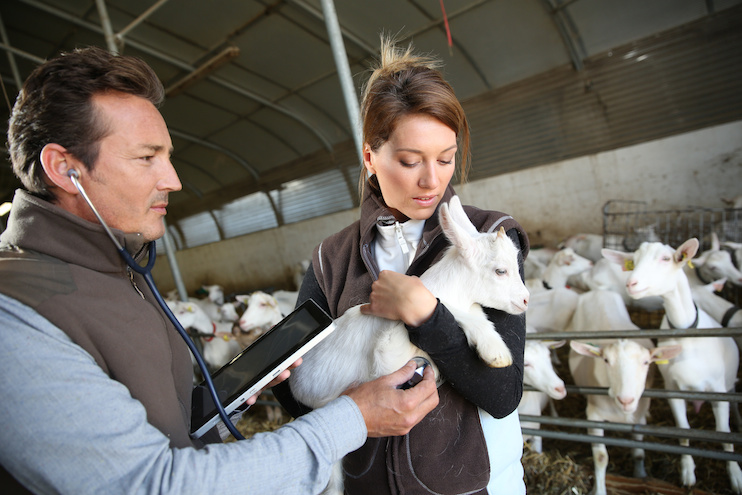Early Implications of the Veterinary Feed Directive
Recently the animal health industry has taken significant steps to promote the judicious use of antibiotics. The process of administering “medically important” (aka those that treat human and animal disease) antibiotics in livestock has been found to contribute to antimicrobial resistance, a scenario in which bacteria can withstand and eliminate the effects of drugs and related chemicals. Previously, there was no real standard in place to supervise and police in-feed antimicrobials use.
About the Veterinary Feed Directive
With the aim to encourage usage of the right drug at the right dosage over the right duration in feed, the FDA published the Veterinary Feed Directive (VFD) in June 2015. This ruling establishes requirements for veterinarians, feed distributors and producers whereby the utilization of certain antibiotics is only permitted under the professional supervision of a licensed veterinarian. On January 1 of this year, the ruling was officially implemented. While antibiotics used to prevent and control disease are still acceptable when truly needed, the FDA has essentially outlawed antimicrobials for growth promotion or to improve feed efficiency.
Today, the FDA enforces the ruling with regular inspections of feed mills that must maintain records of antibiotics sold or incorporated into the feed they sell. All veterinarian involvement is tracked. However, there is still some uncertainty as to the true impacts of the VFD just seven months after implementation. Here is what we know:
Economic Impacts of VFD
While it is somewhat difficult to truly understand the economic impacts of a ruling that was enacted just this year, trends are emerging within manufacturing and distribution channels. All products that include the types of antibiotics affected by the ruling must include an FDA-approved label. As a result, manufacturers incurred additional costs related to the regulatory process of changing labels and developing new packaging.
There are indications distributors of antimicrobial products have decreased inventory in anticipation of decreased demand. This has in turn resulted in a significant reduction of in-feed antimicrobials in the supply chain.
As only certain types of antibiotics fall under the VFD ruling, not all distributors have paid a price. Over 70% of the medically important antimicrobials fall under the tetracycline category.
In terms of the ability to prevent and control illness, especially in the cattle feed segment, there have been a few temporal growing pains. Smaller beef producers without a close, established relationship with a licensed veterinarian have learned the hard way when told they can only purchase antibiotics in feed if they first obtain a VFD from their veterinarian. These negative impacts have been most among infrequent antibiotics users.
Altered Approaches to Animal Health
The feeling among several in the industry is that the use of in-feed antimicrobials will reduce dramatically or be discontinued altogether in some cases. Despite the economic consequences, the ruling has yielded benefits, albeit indirectly.
These restrictions on antibiotic availability have spawned improvements in sanitation and vaccination procedures. Producers are implementing changes to grouping methods and herd management. Smaller groups of animals generally equates to greater control over the spread of illness and disease.
Making Responsibility a Chief Priority
It is a fair assertion that all parties can agree the premise of the VFD ruling is positive and important to protect animal health and ultimately public health. Whether it be through purposeful or unintended practices, antibiotics administration has continued to increase significantly over the past twenty years.
Bryan Vincent, President and CEO of Precision Science, supports the ruling and its intentions.
“Ultimately, the FDA wants to end growth promotion use of medically important antibiotics, and there is legitimate concern about antibiotics in our food supply,” says Bryan. “We support a healthy food chain throughout the world. This ruling is all about judicious usage.”
In addition to similar positive sentiments expressed by many about the VFD, several have applauded the FDA’s process for implementation. Frequent users directly impacted by the ruling have been very pleased with the approach the FDA took in helping the veterinarian community understand this ruling, its implications and how it will be implemented and enforced.
The Veterinary Feed Directive cultivates an image of responsible use and accountability. As with any measure set to alter the manner in which industry, manufacturers and distributors conduct business, hurdles related to implementation are bound to emerge. When it comes to planning ahead, Bryan Vincent says, “we’ve been helping companies manage their inventory forecasting to ensure smooth transition under the new rules and minimize any negative impact.” When market equilibrium sets in completely, we’ll all know more about the true impacts of VFD. For now, VFD represents a collaborative effort to safeguard animal health in a practical manner, a cause worthy of veneration.
How can we help you?
Learn more about our complete set of services from contract manufacturing to packaging. Call us at 623-336-7256 today.






